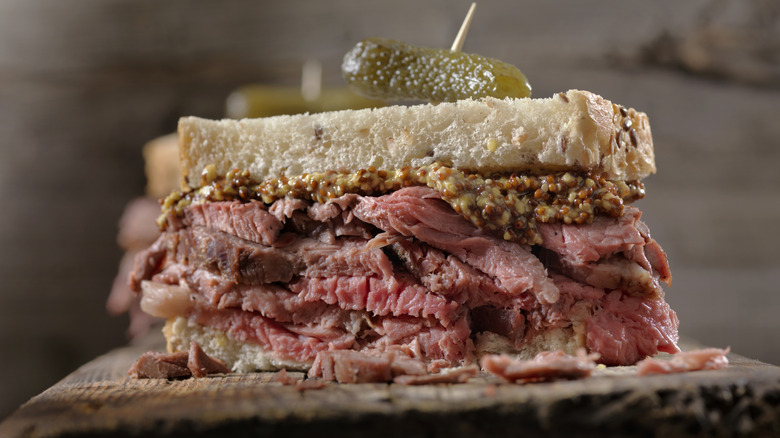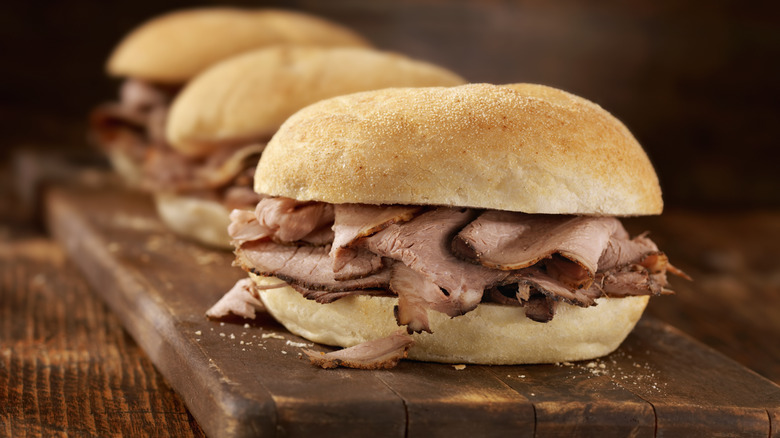The Best Cut Of Beef To Use For A Mouthwatering Sandwich
When we talk about great sandwiches, roast beef tends to get the short shrift. Part of this is because there isn't one true version of what the ideal roast beef sandwich actually is — you only have to compare Chicago's Italian beef or French dip to the type of fare you'd order at Arby's to recognize that. But in a way, this lack of an ideal means you can get pretty creative if you decide you'd like to make a roast beef sandwich at home. And while you could just buy a package of deli meat, your sandwich will be infinitely better if you decide to roast some beef yourself.
But if you go that route, which cuts of beef should you choose? There are various schools of thought here, but the surprising answer is that the best choice doesn't actually correlate with a higher USDA grade. Though top loin is a good cut to go with (namely due to its taste and because it's pretty easy to trim away the fat, located on one side of the cut, after your roast is ready), it's also pretty pricey. So instead, you'll want to look at two cheaper and leaner cuts that are often overlooked: eye of round and top round.
Fattier cuts paradoxically wind up tougher
Fattier cuts like ribeye, New York strip, or T-bone are generally regarded as higher quality meats, and they indeed make for fantastic steaks — but that doesn't mean they're particularly good choices for roast beef. When you roast a fattier cut of beef, the fat starts to break down, basting the meat and softening the connective tissue. If you're serving your roast hot for your sandwich, this is exactly what you want — and in that case, by all means, go for the high-fat stuff — but if you're not, top round and eye of round should be your go-to.
The reason? High-fat cuts don't hold up nearly as well when cooled; the fat congeals and the connective tissue hardens back up. Paradoxically, fattier cuts will wind up far tougher than leaner ones, leaving behind a gristle-laden texture that most people would not consider particularly pleasant. By contrast, tougher, cheaper cuts like top round and eye of round take very well to the slow cooking necessary for a roast. Gentle heat softens them and leaves them with a more silky texture, and they don't wind up with pockets of hard fat or connective tissue because they don't have them to begin with. So if you want to go the homemade route for the perfect roast beef for your sandwich, remember that these cuts will work out far better in the long run.

